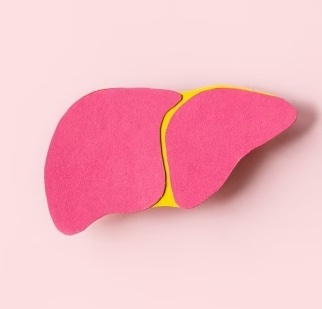Fatty Liver disease surging among children

Dreamstime
By Lynn C. Allison From Newsmax
October is National Liver Awareness Month and the American Liver Foundationreminds us that fatty liver disease affects an estimated 80 to 100 million Americans. Up to 75% of overweight people and more than 90% of people with severe obesity have fatty liver disease. And most alarming, researchers say that an estimated 5 to 10% of all children in the U.S. have nonalcoholic pediatric liver disease, making it as common as asthma among kids.
According to The Washington Post, the number of children and young adults being diagnosed and treated for nonalcoholic fatty liver disease has increased rapidly in recent years. The data from 2017 to 2021 shows that for children up to the age of 17, the rate of diagnosis more than doubled. Liver transplants have likewise grown among adolescents and young adults, with a 25% increase during the past decade in children 11 to 17 years old.
Alert: The #1 Food Item That Causes Fatty Liver Disease
Nonalcoholic fatty liver disease occurs when excess fat accumulates in the liver, says Children’s Health. If left untreated, it can lead to serious liver problems like fibrosis, cirrhosis (scarring of the liver), and liver cancer.
“The main reason fatty liver disease has become an epidemic is that more and more children face obesity,” explains Dr. Charina Ramirez, a pediatric gastroenterologist at Children’s Health, the leading pediatric health system in North Texas, and associate professor at UT Southwestern Medical Center. “Children affected by obesity have a 38% chance of developing fatty liver disease. Since obesity is an epidemic on its own, fatty liver disease mirrors that.”
While there is no medication to reverse or cure fatty liver disease, lifestyle changes can have a big impact on its progression.
“While fatty liver disease is dangerous over the long-term, it is a disease you can work to improve,” says Ramirez. “The liver is an interesting organ and capable of regenerating and recovering — if lifestyle changes are made.”
Experts have linked the introduction of ultra-processed food into the North American diet to the rapid rise in childhood obesity and fatty liver disease. According to the Post, nutritional surveys show that meals eaten by kids changed radically in one generation, going from very little ultra-processed foods in the 1980’s to more than 67% of all meals in recent years.
“It creates a time bomb and is killing our kids,” said Barry M. Popkin, distinguished professor of nutrition at the University of North Carolina at Chapel Hill Gillings School of Global Public Health.
Ramirez says that children who are overweight should work with a dietitian to develop a nutrition plan that involves fewer calories, less sugar, and less fat. Children should also increase their physical activity.
Ramirez says that kids have trouble maintaining a healthy weight because they don’t understand how their favorite foods like chips, sodas and sports drinks are hurting their health and how vegetables can actually help them. Teaching kids about how these foods affect their livers gives them the tools they need to make better choices.
“Fatty liver is the gateway to metabolic syndrome, including Type 2 diabetes and eventually heart disease and hypertension,’ said Ramirez, “But you can make a positive impact on the risk of future chronic conditions by eating healthy and staying active.”
© 2023 NewsmaxHealth. All rights reserved.
For more on this story go to: NEWSMAX





